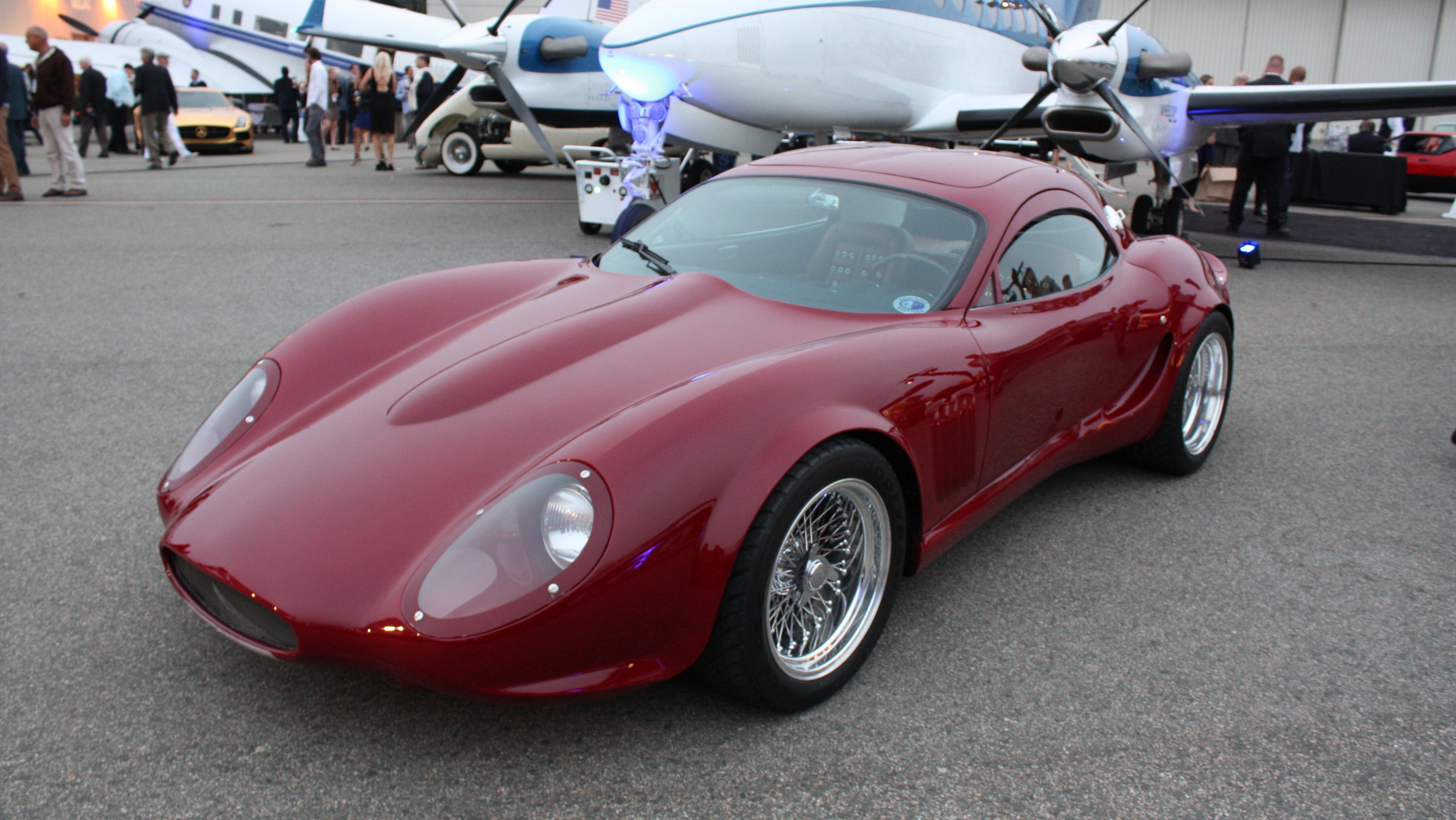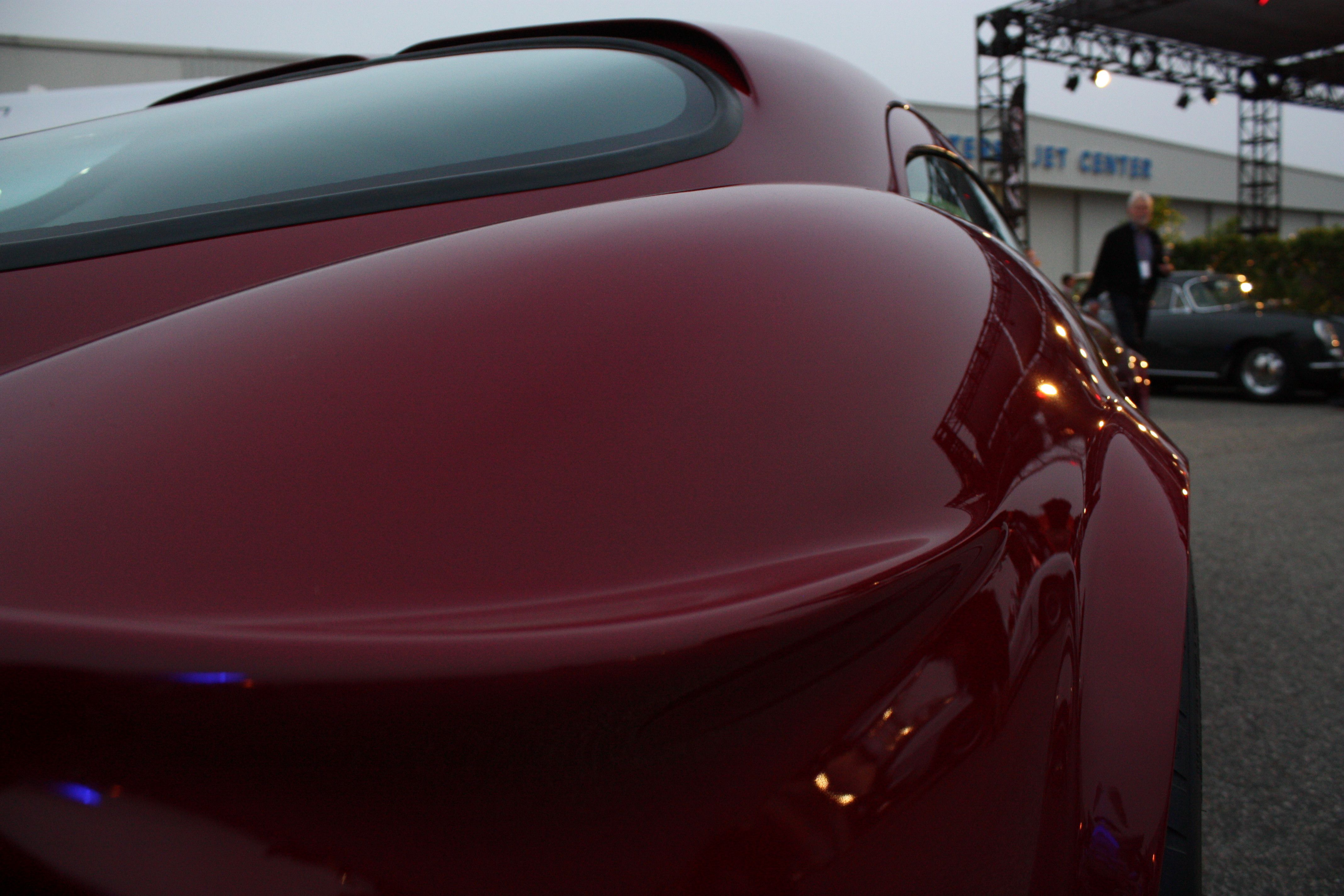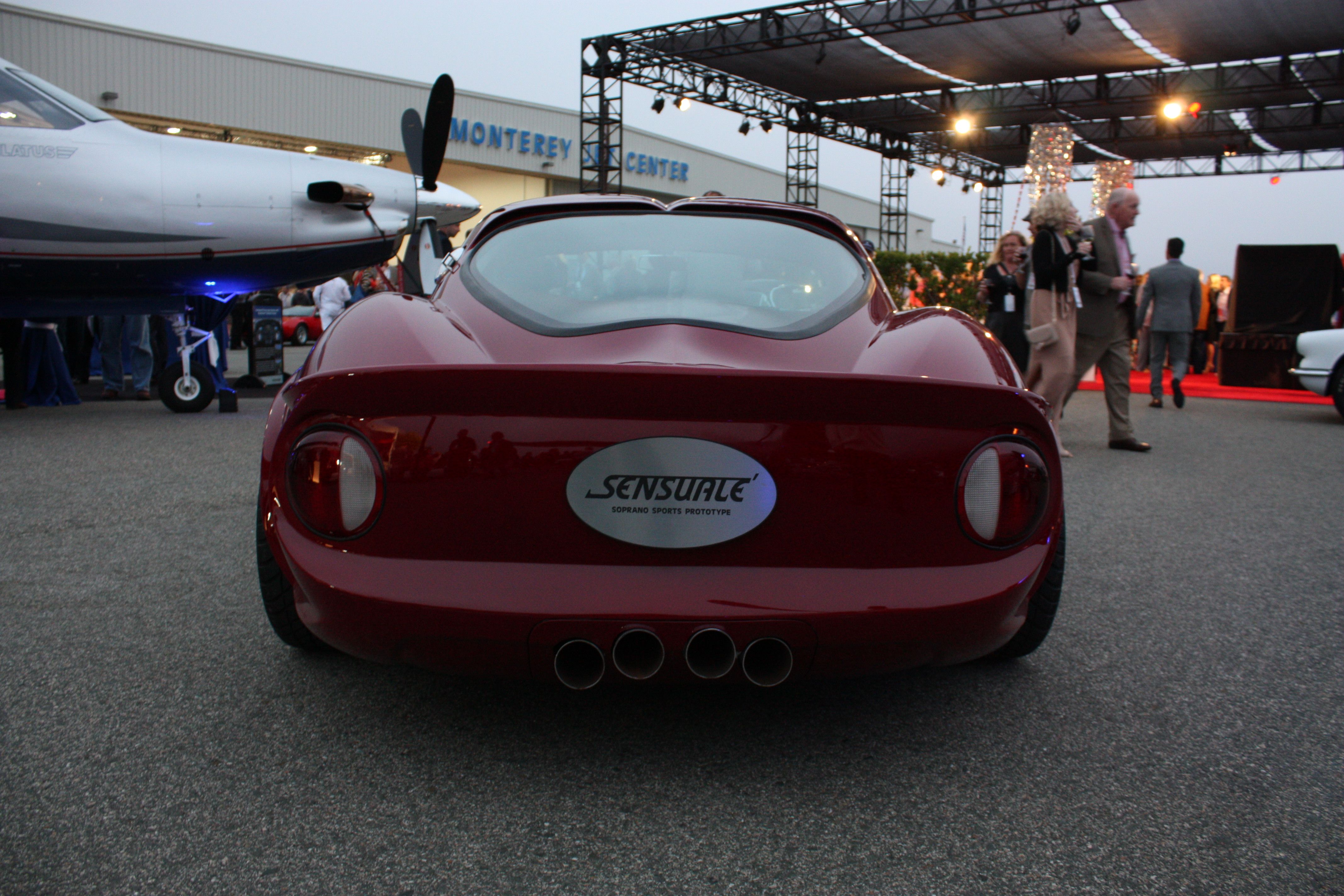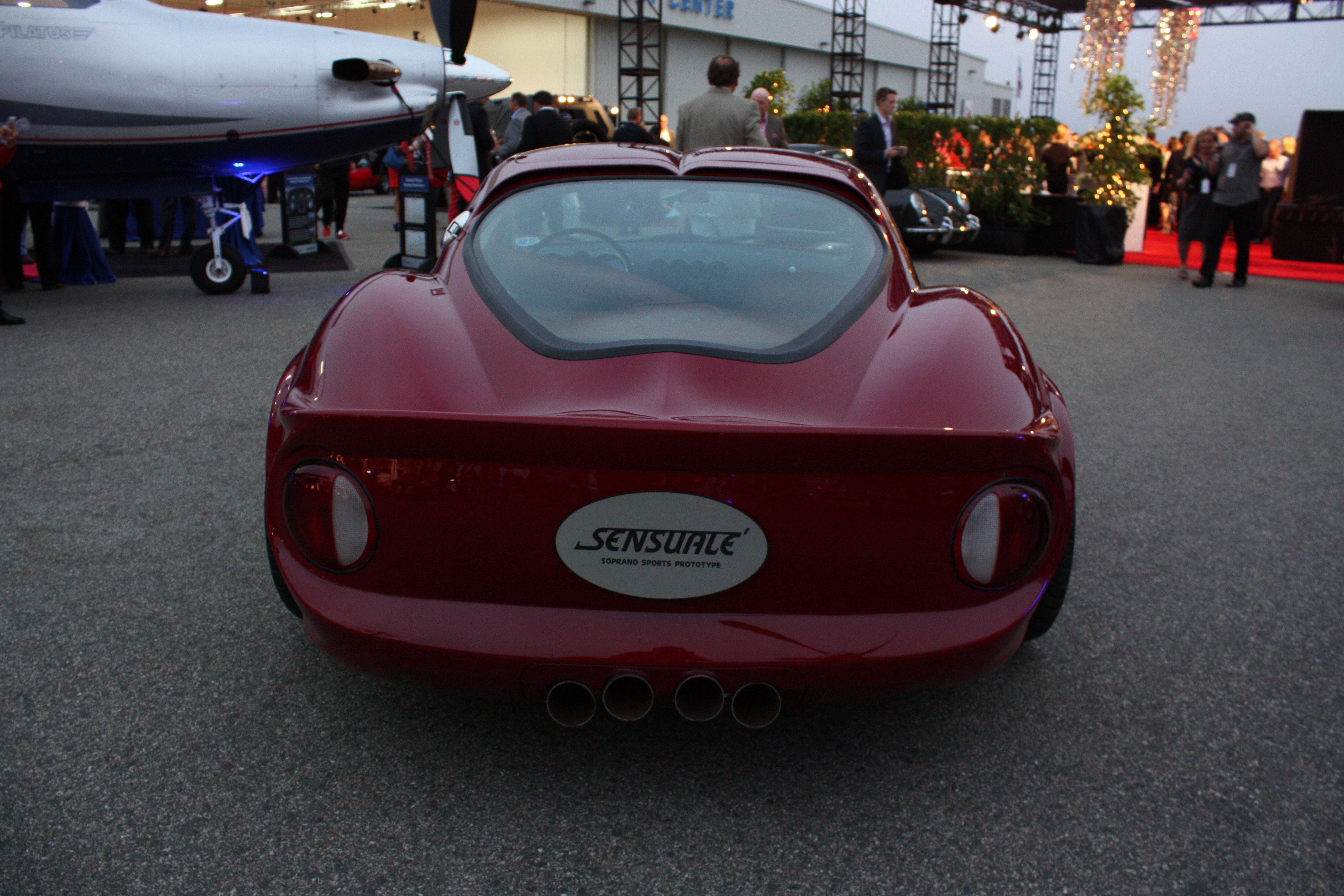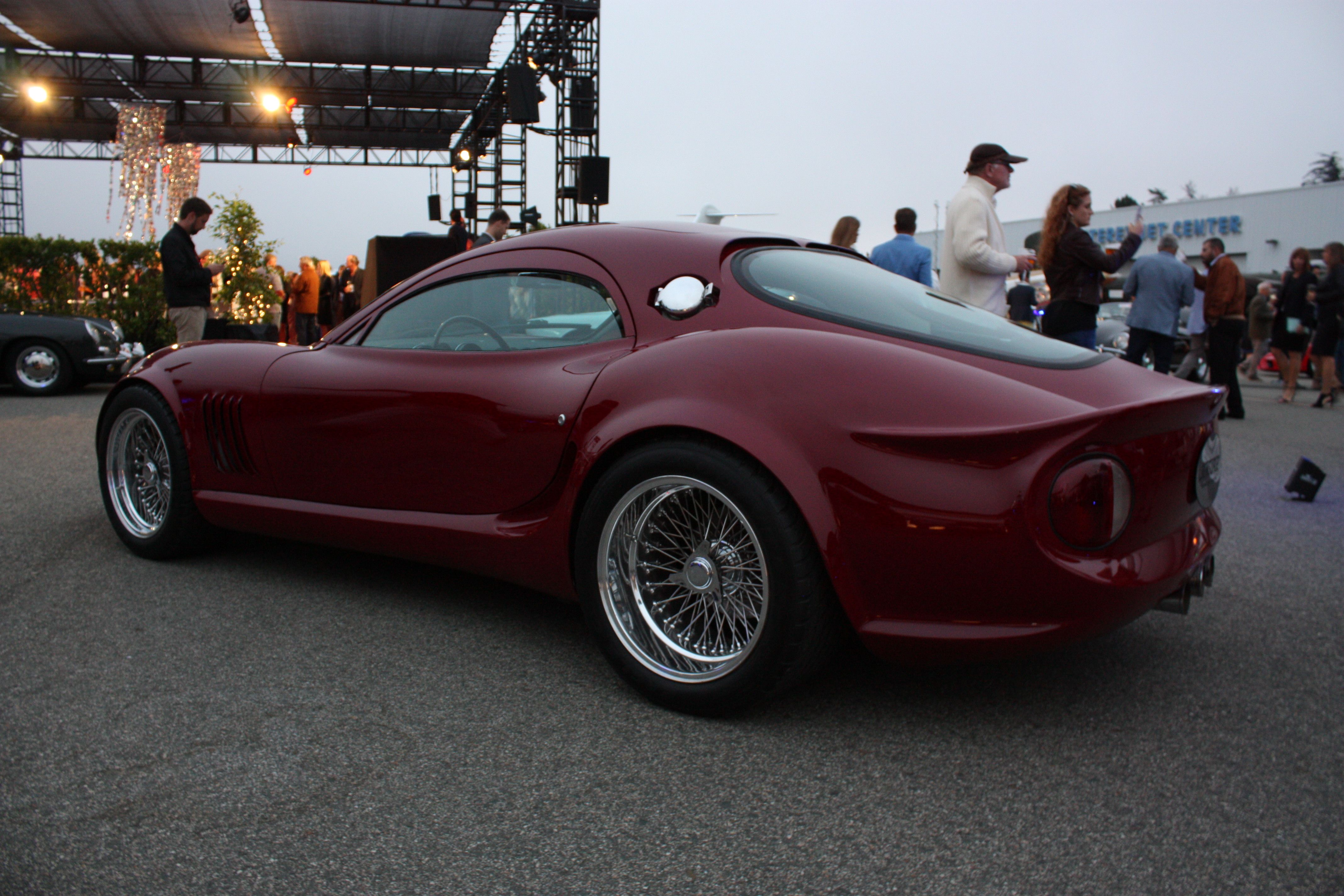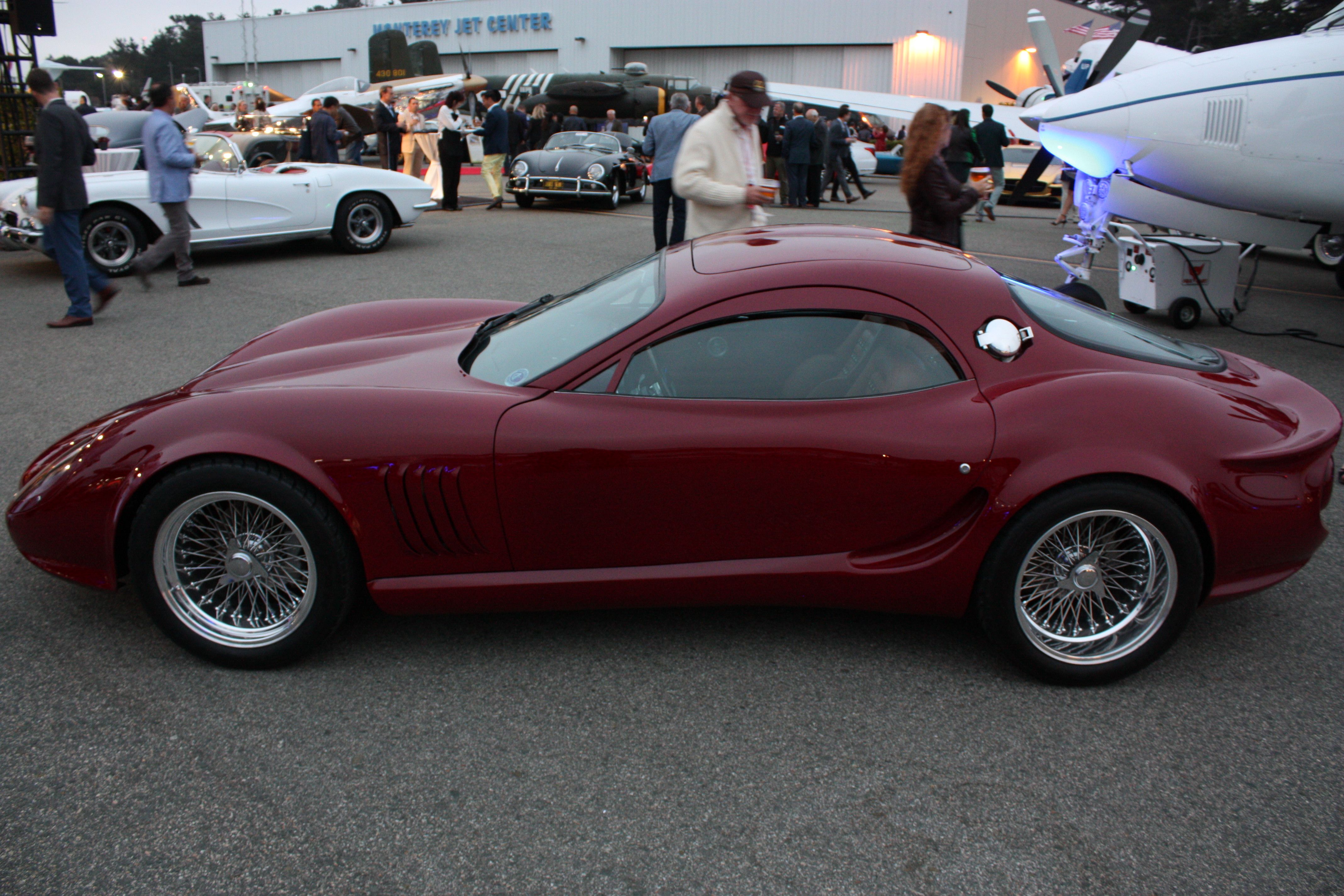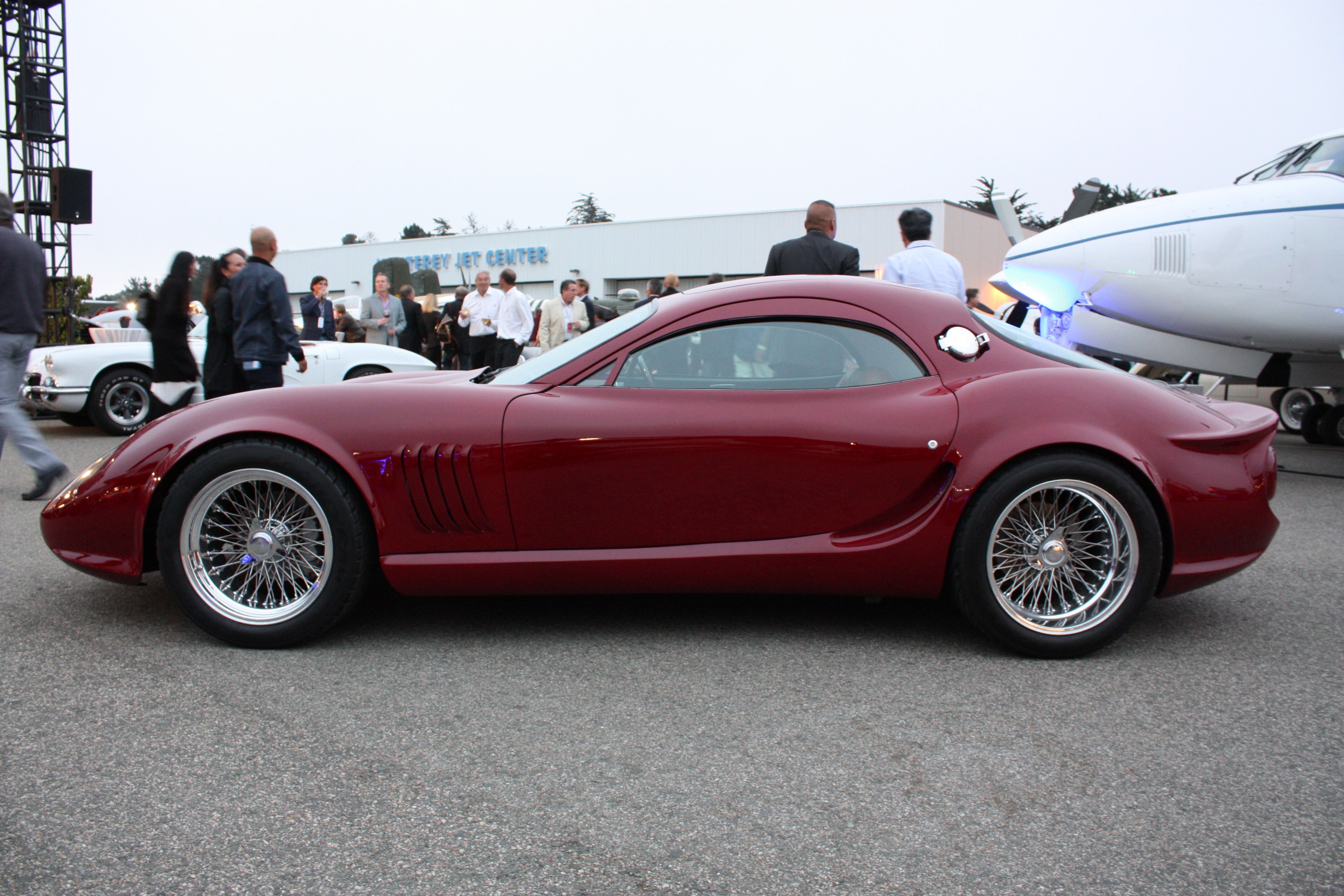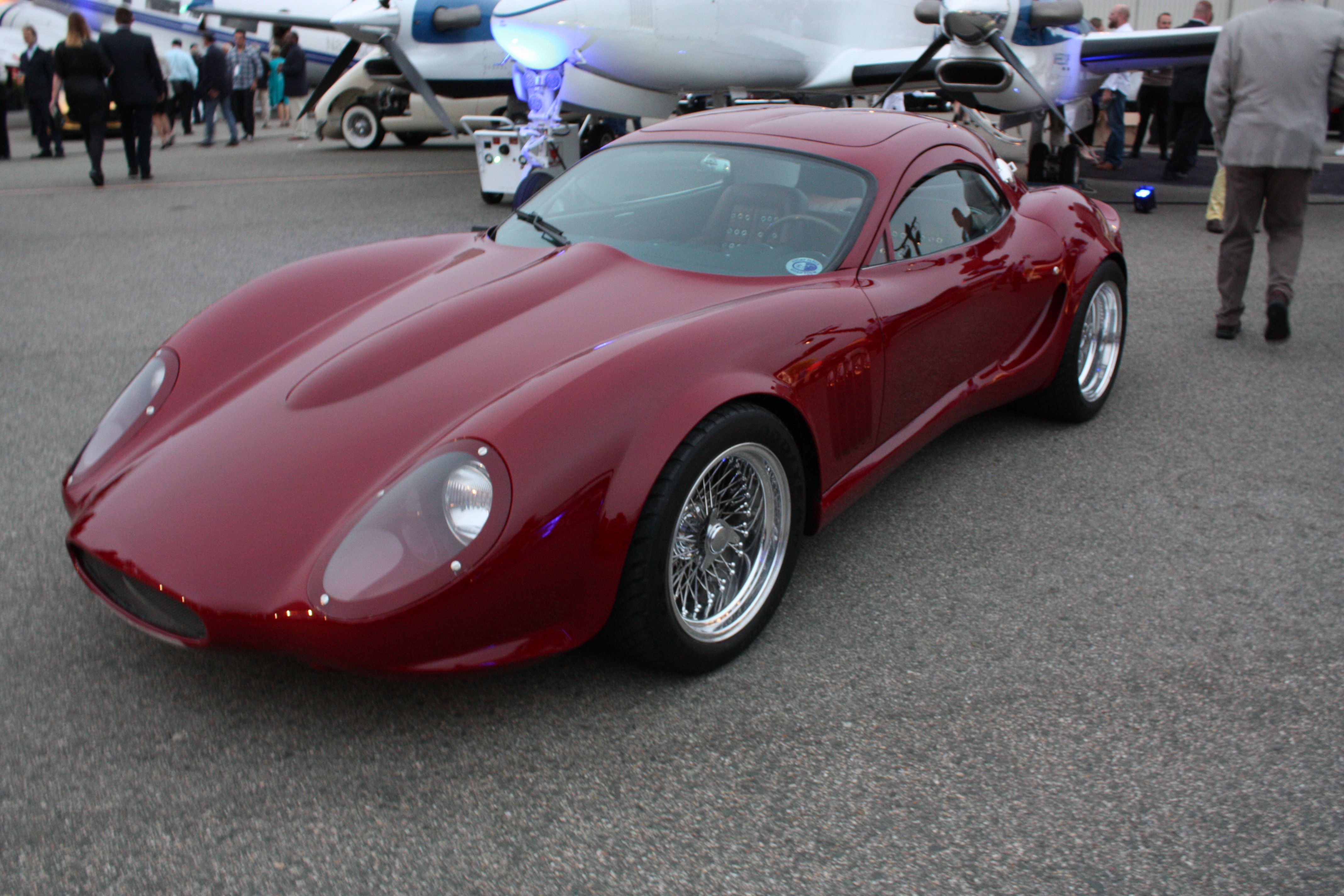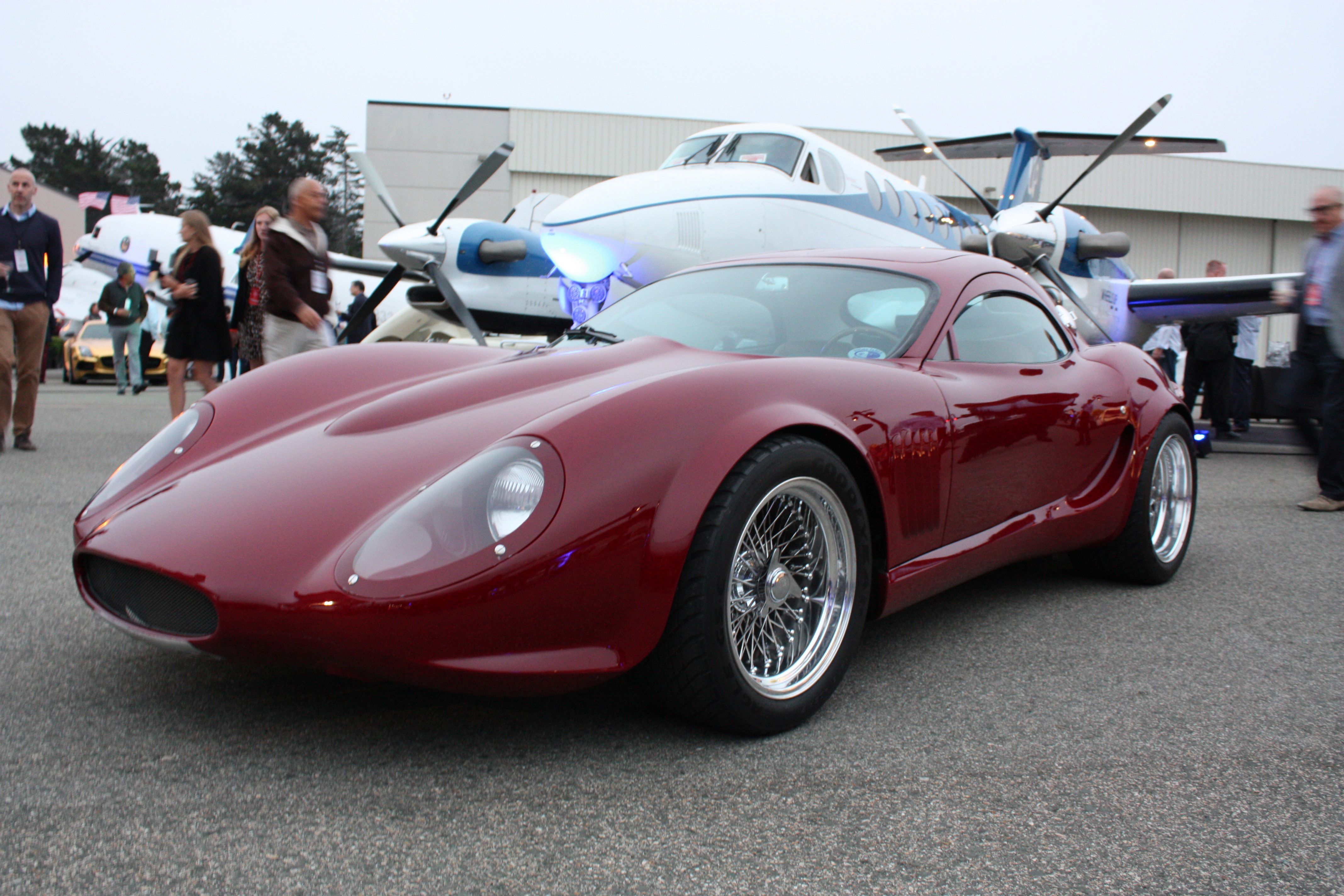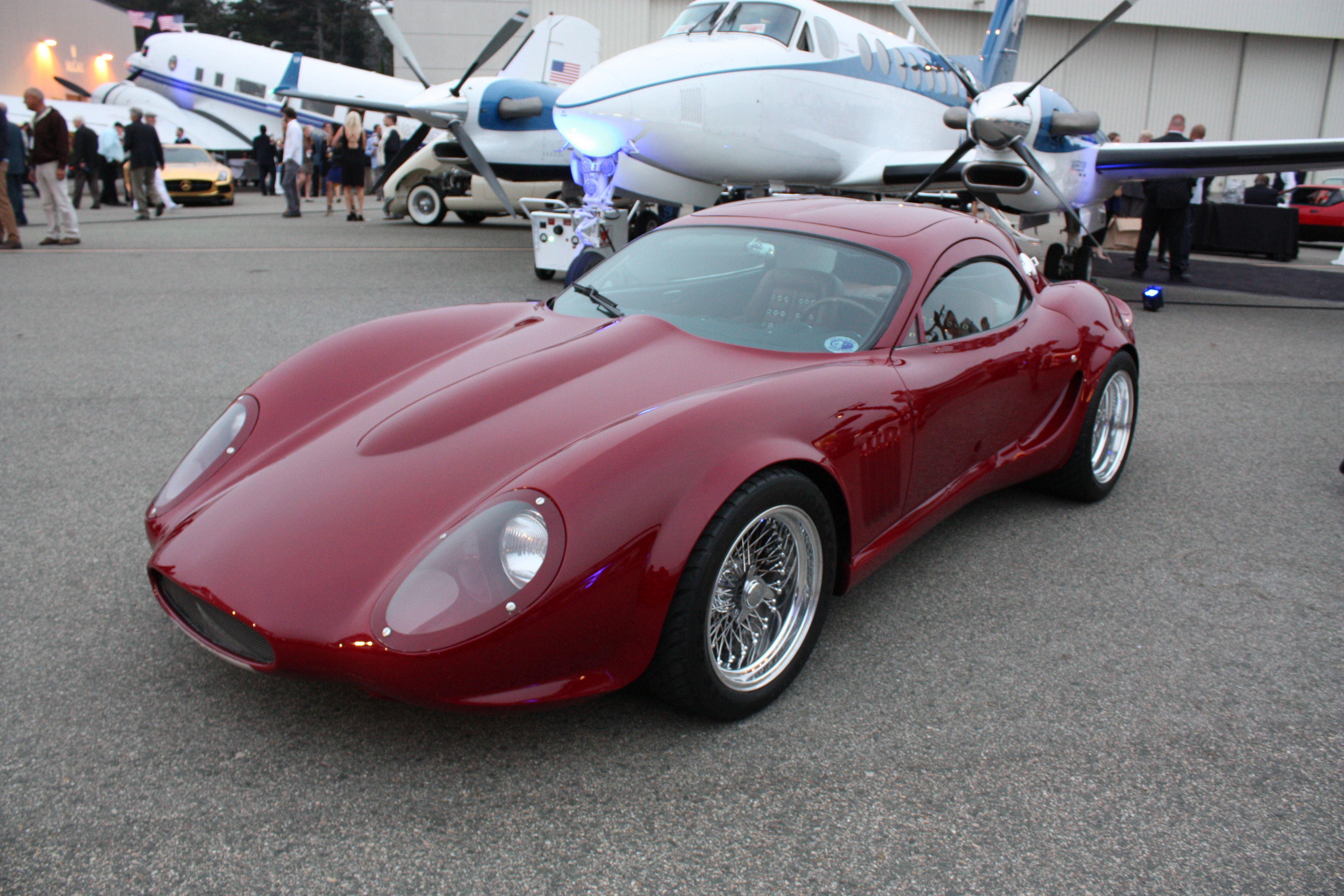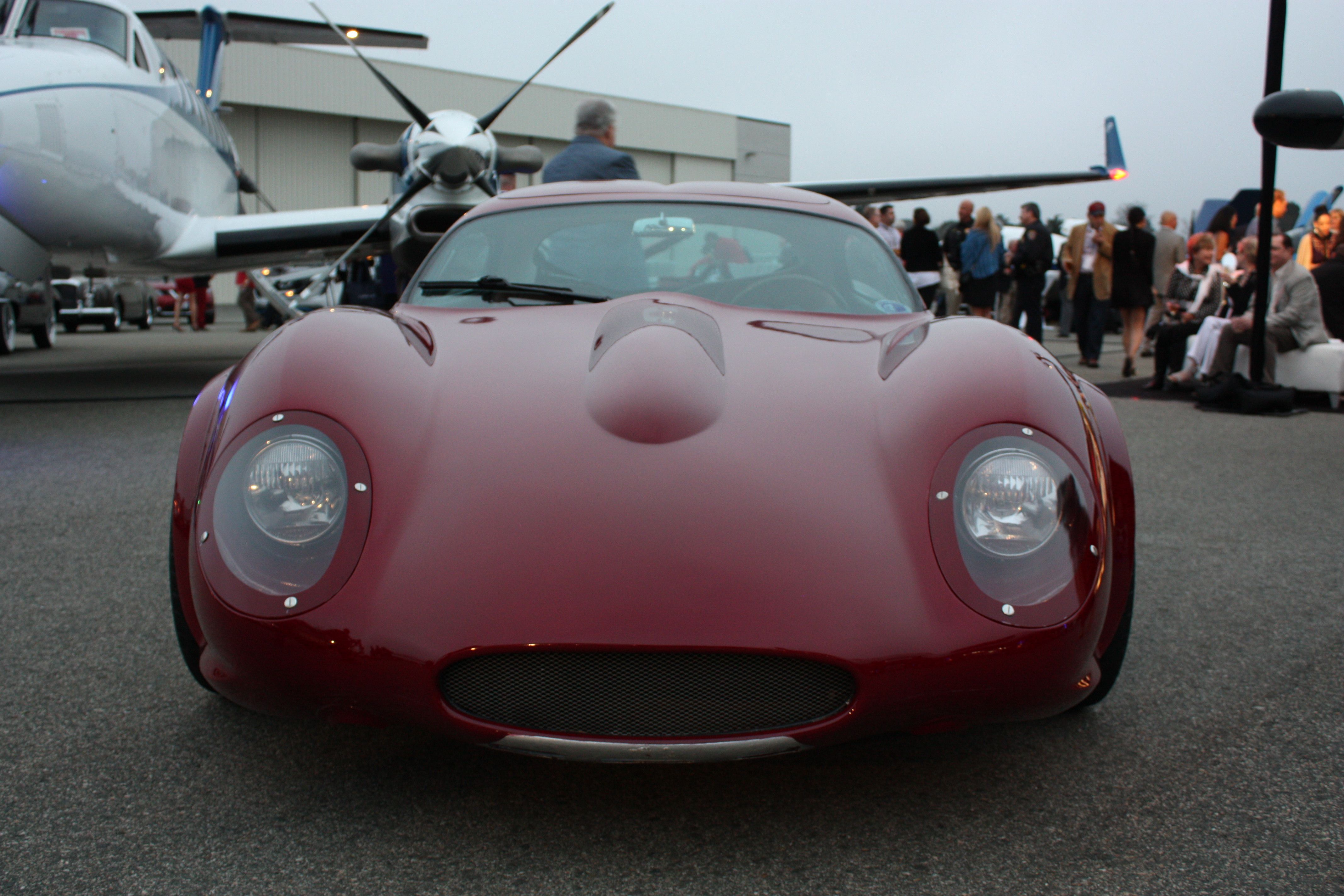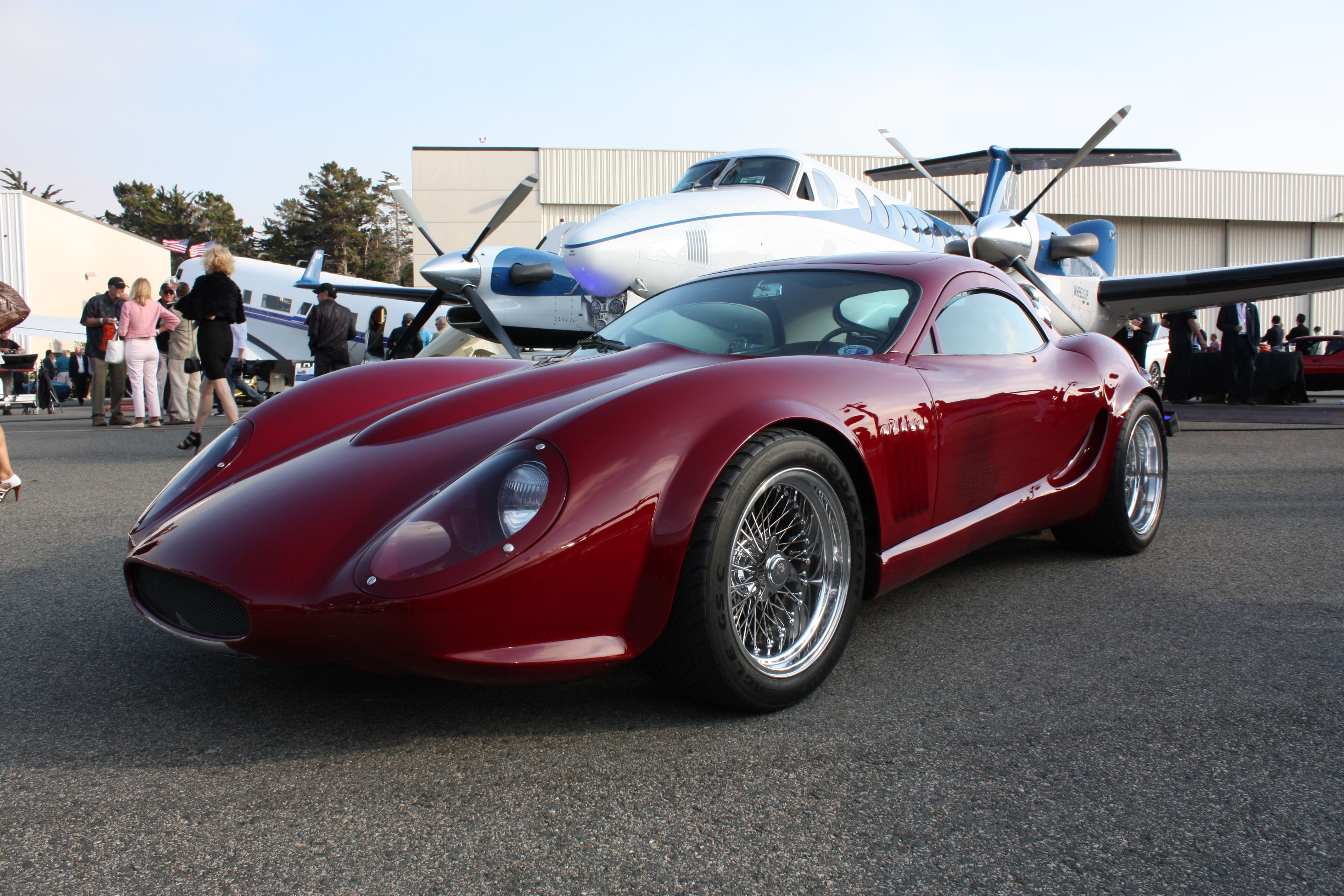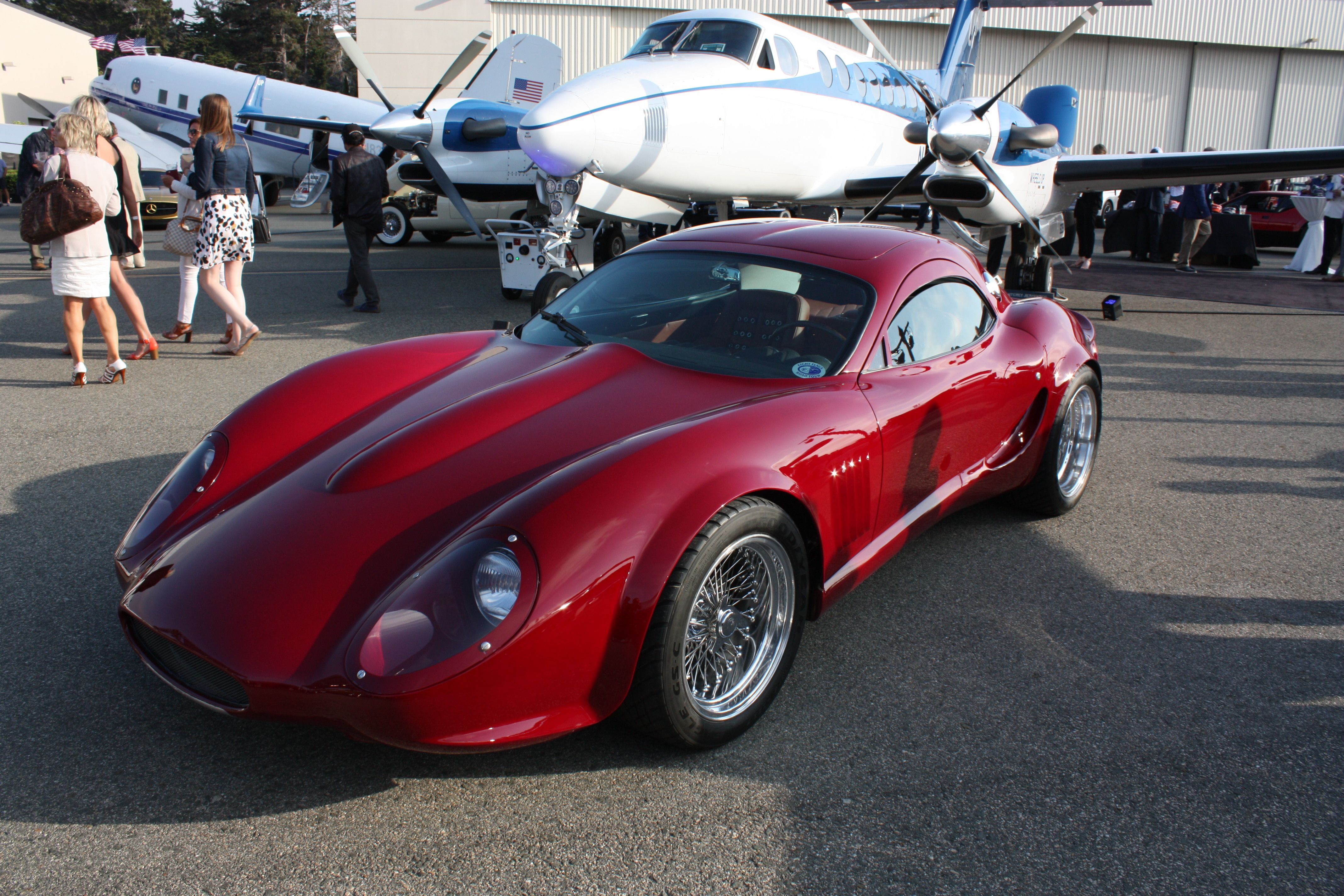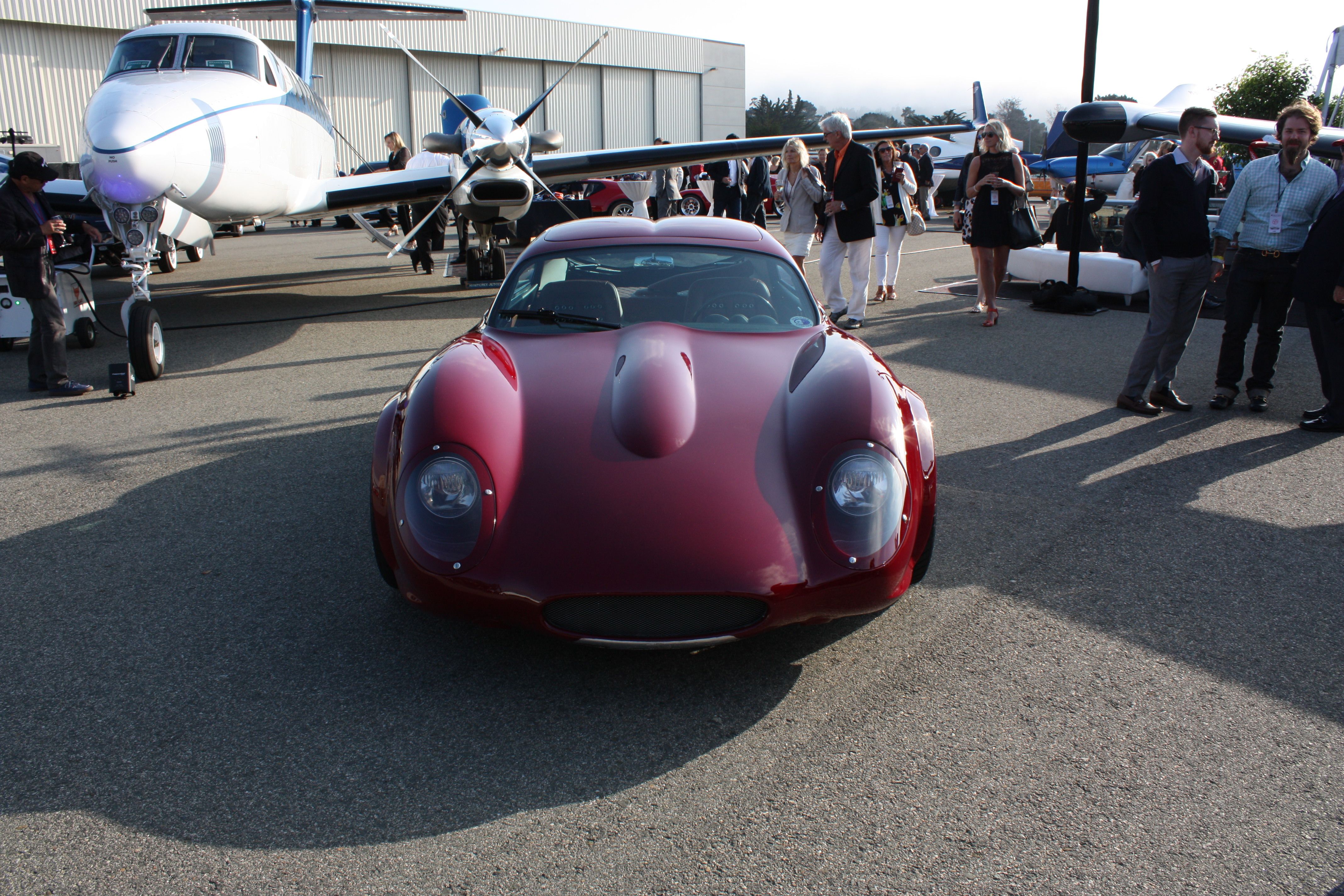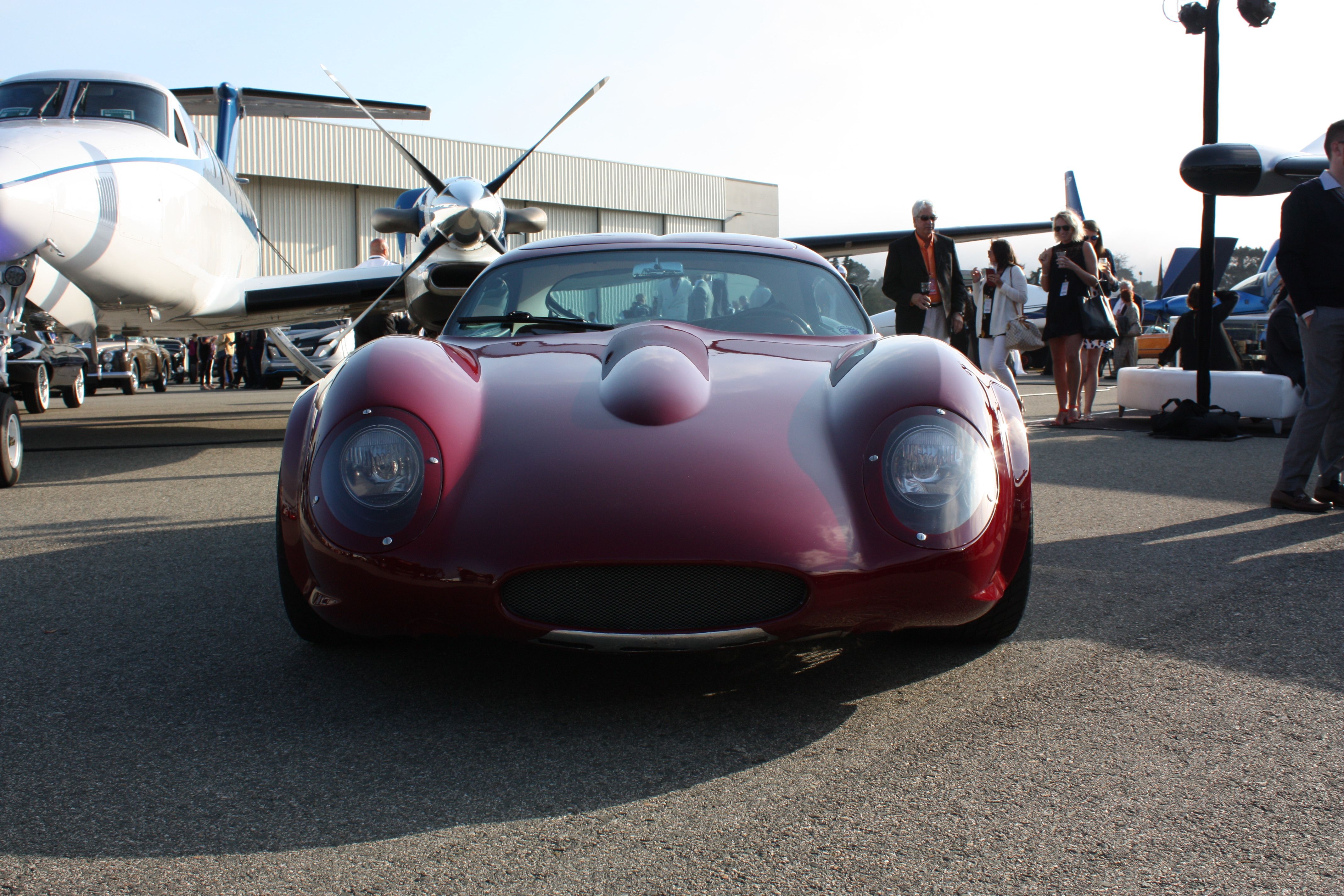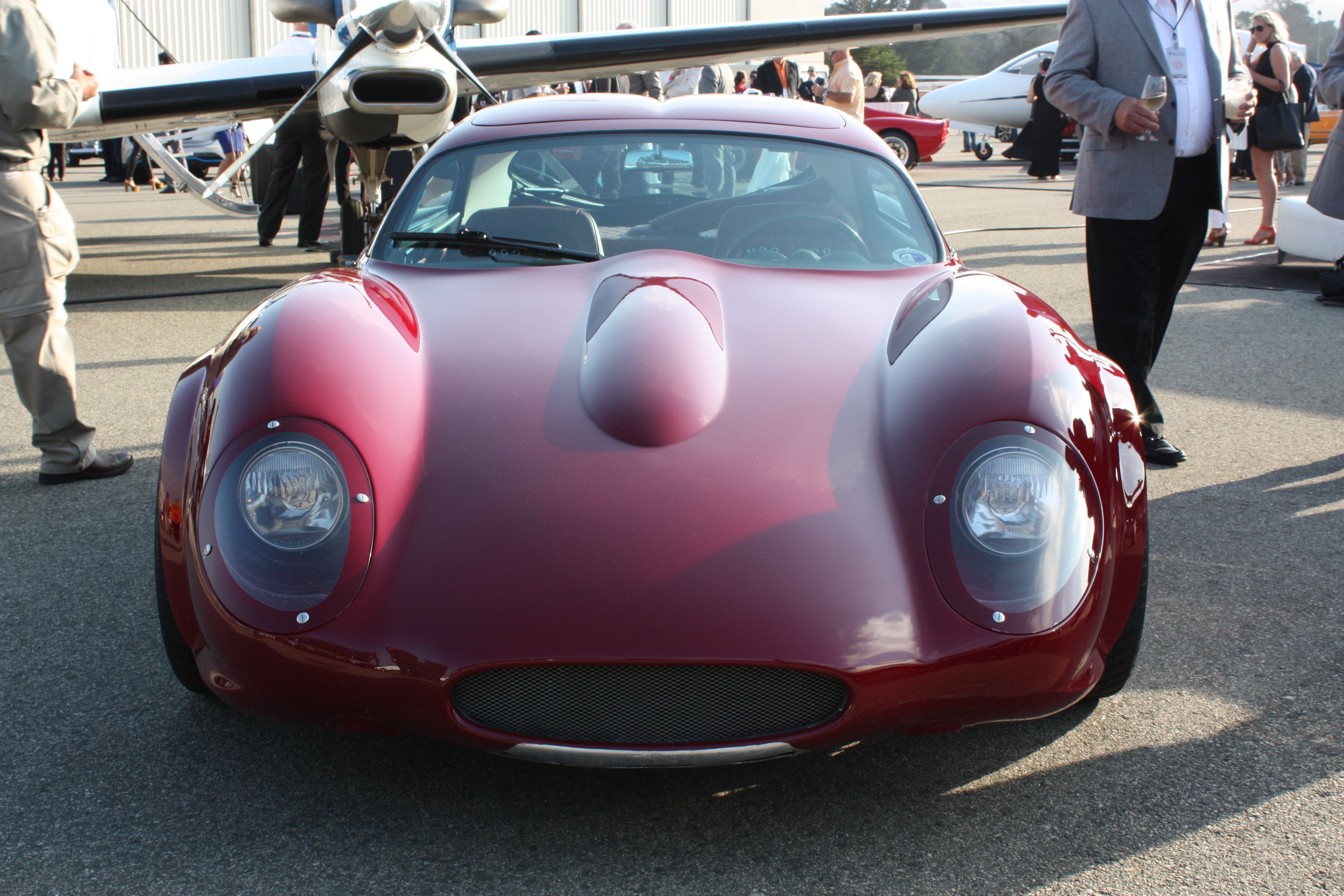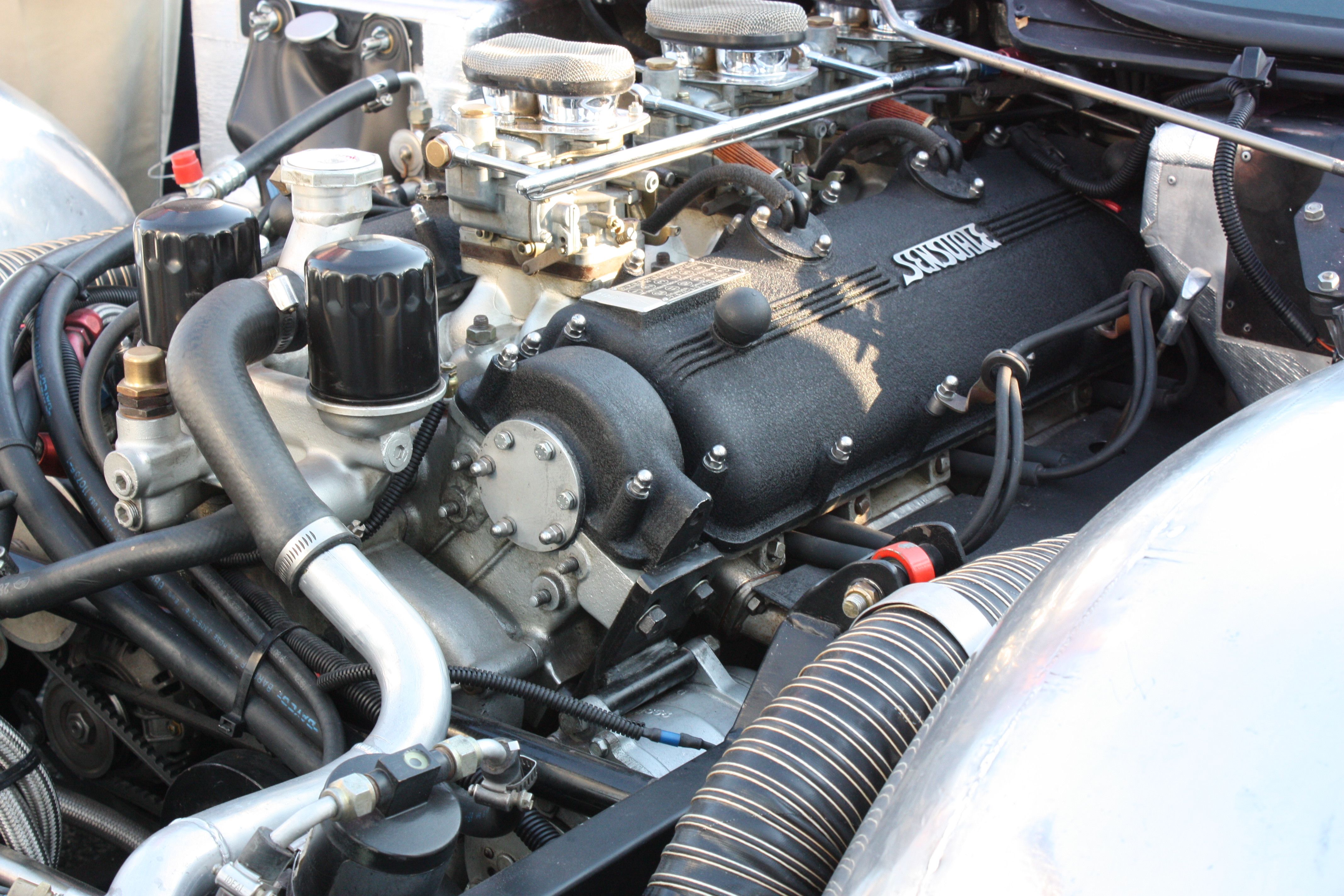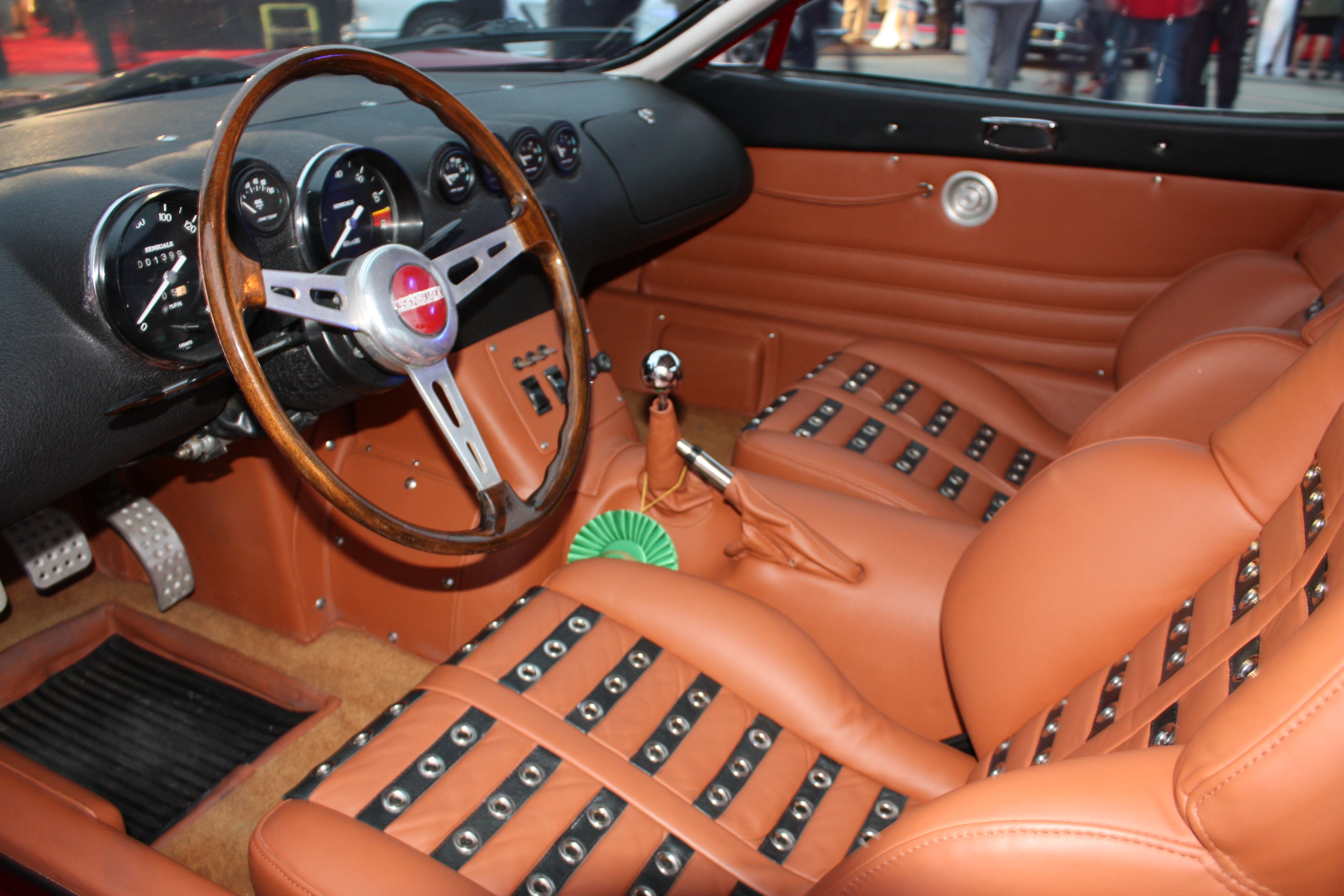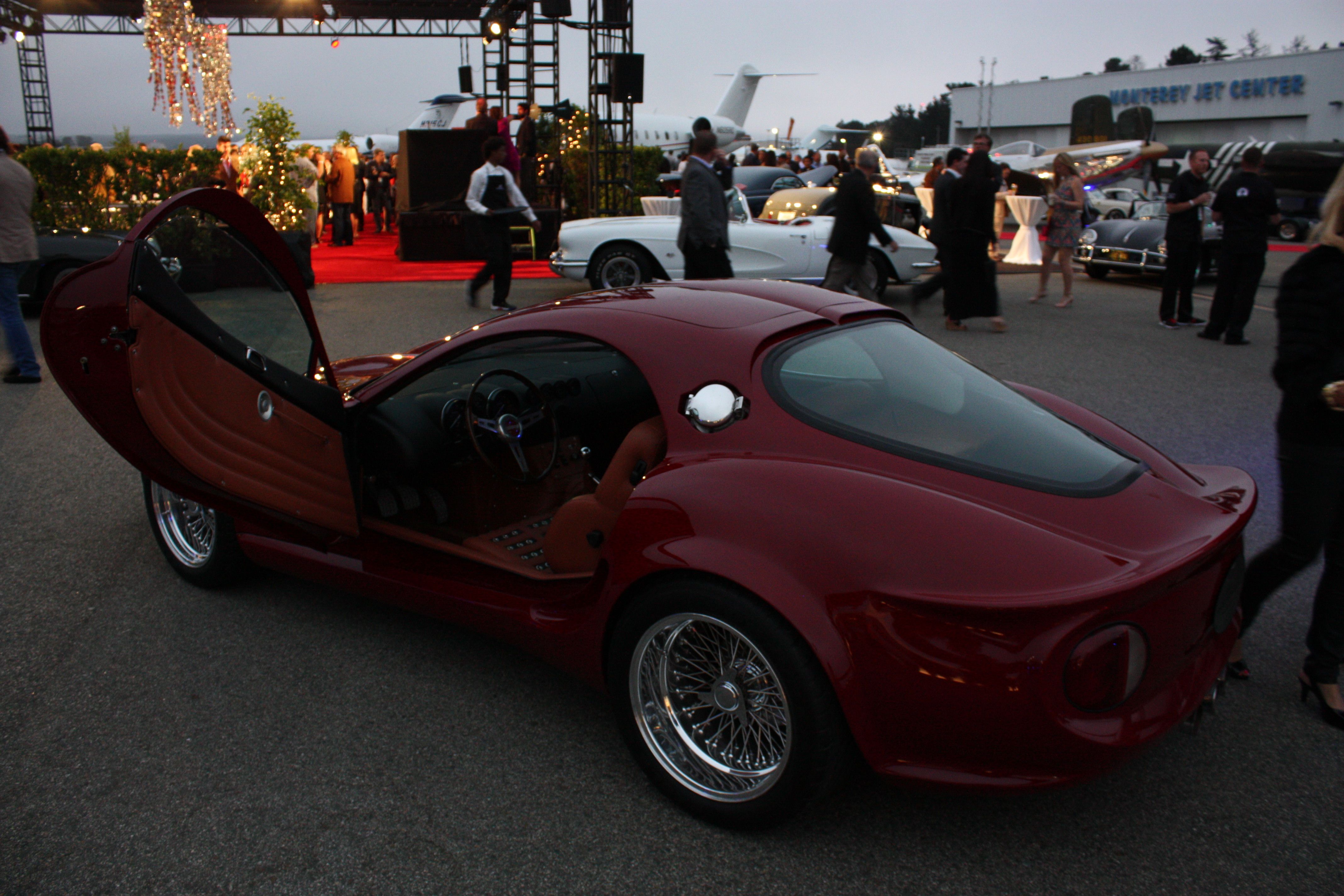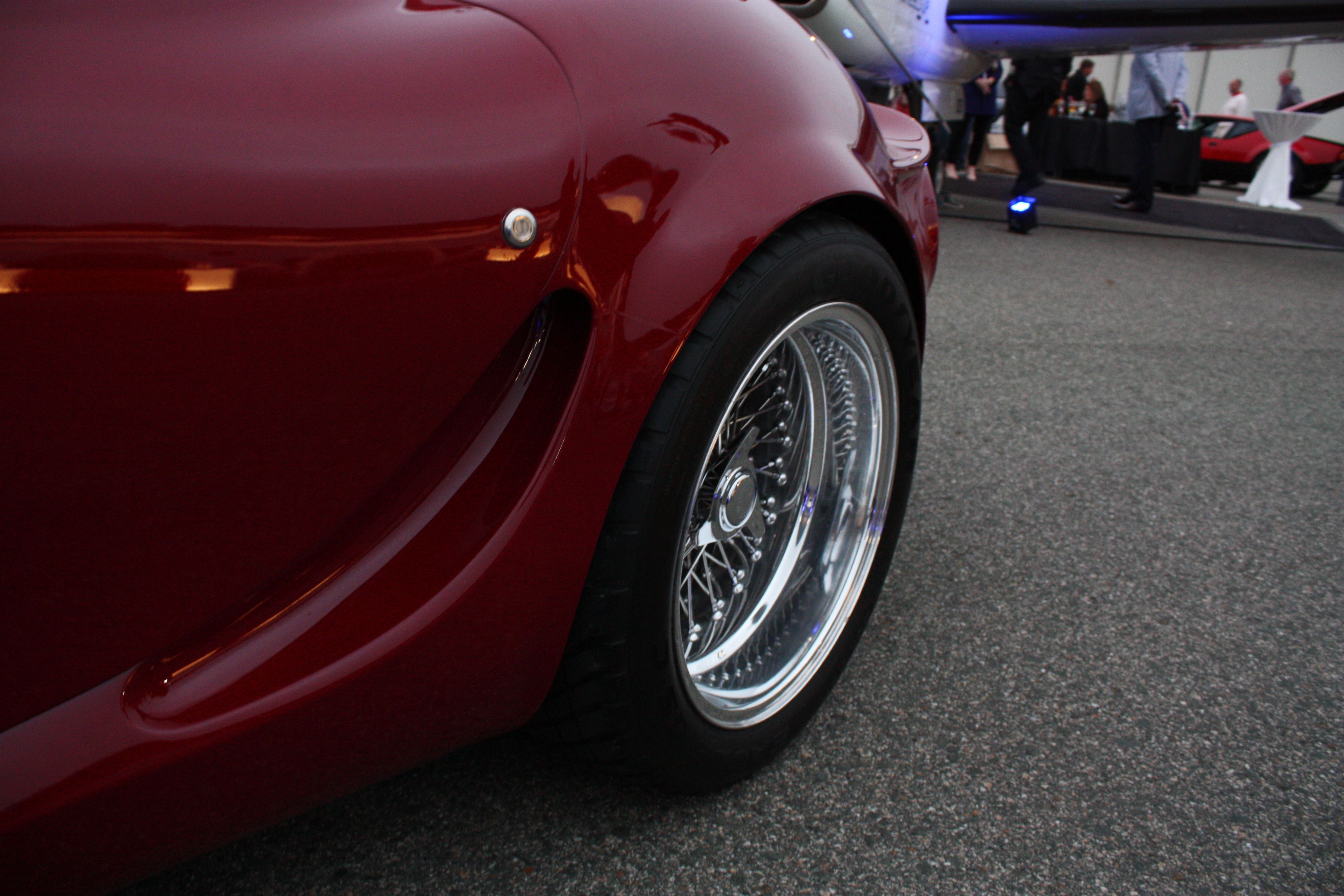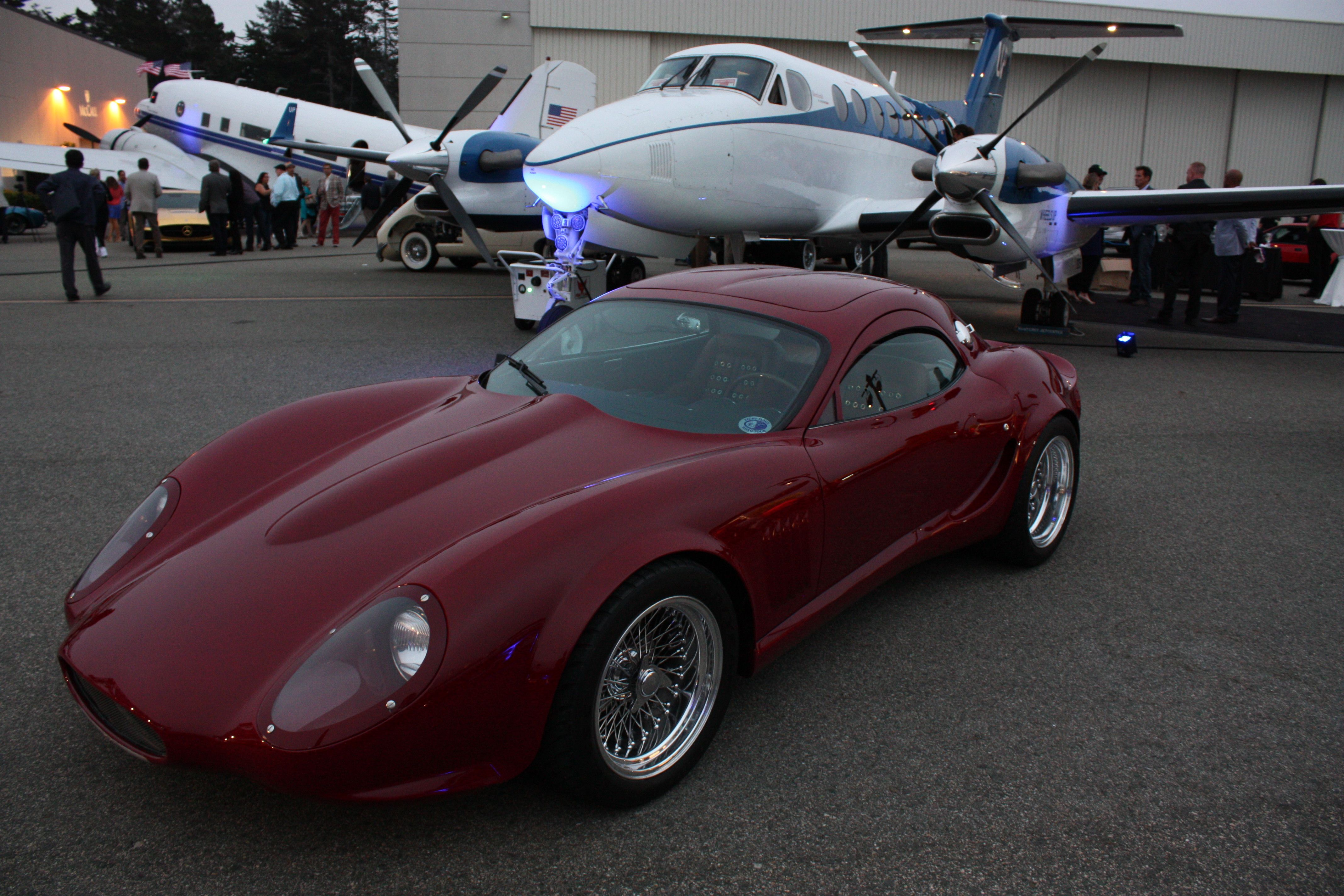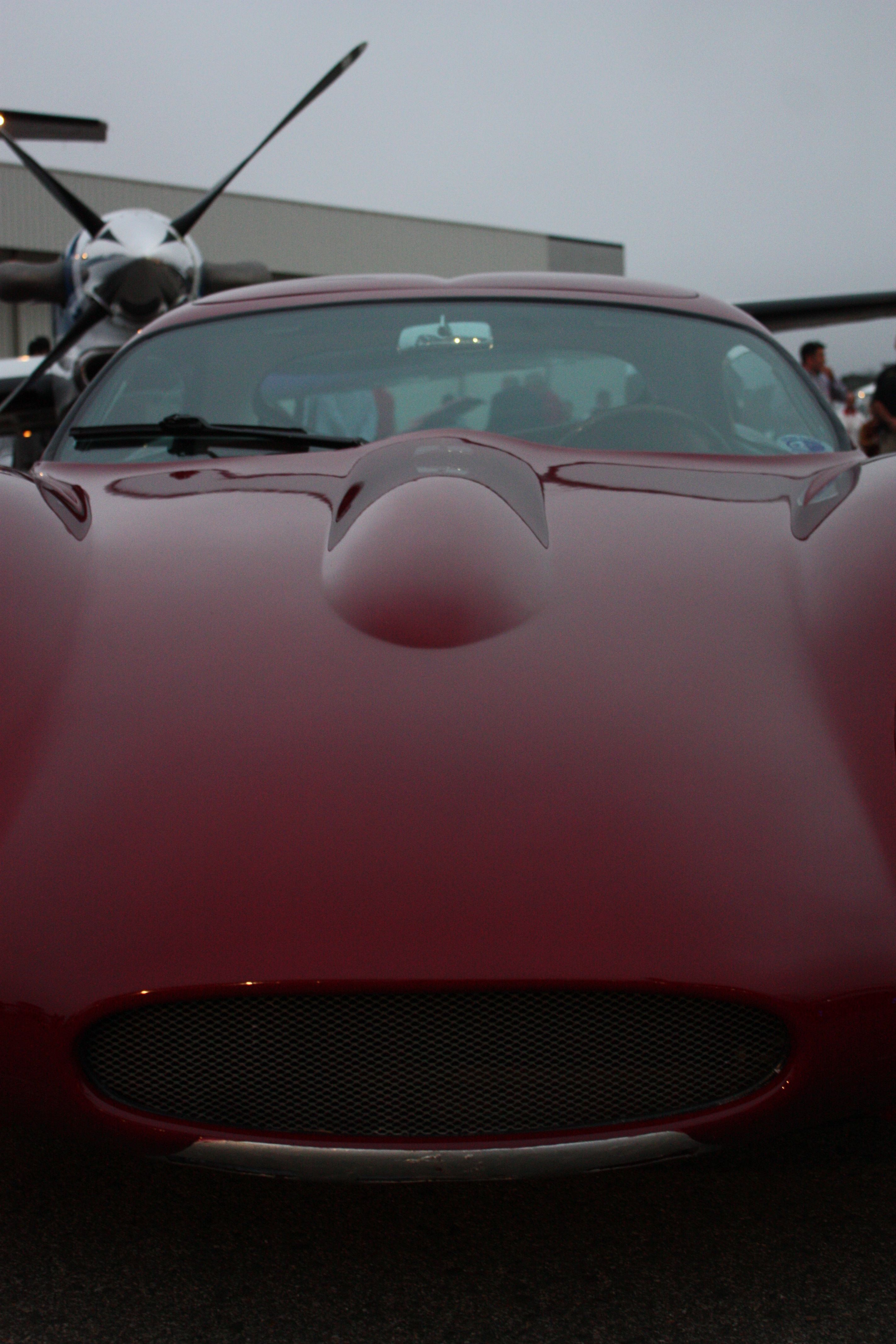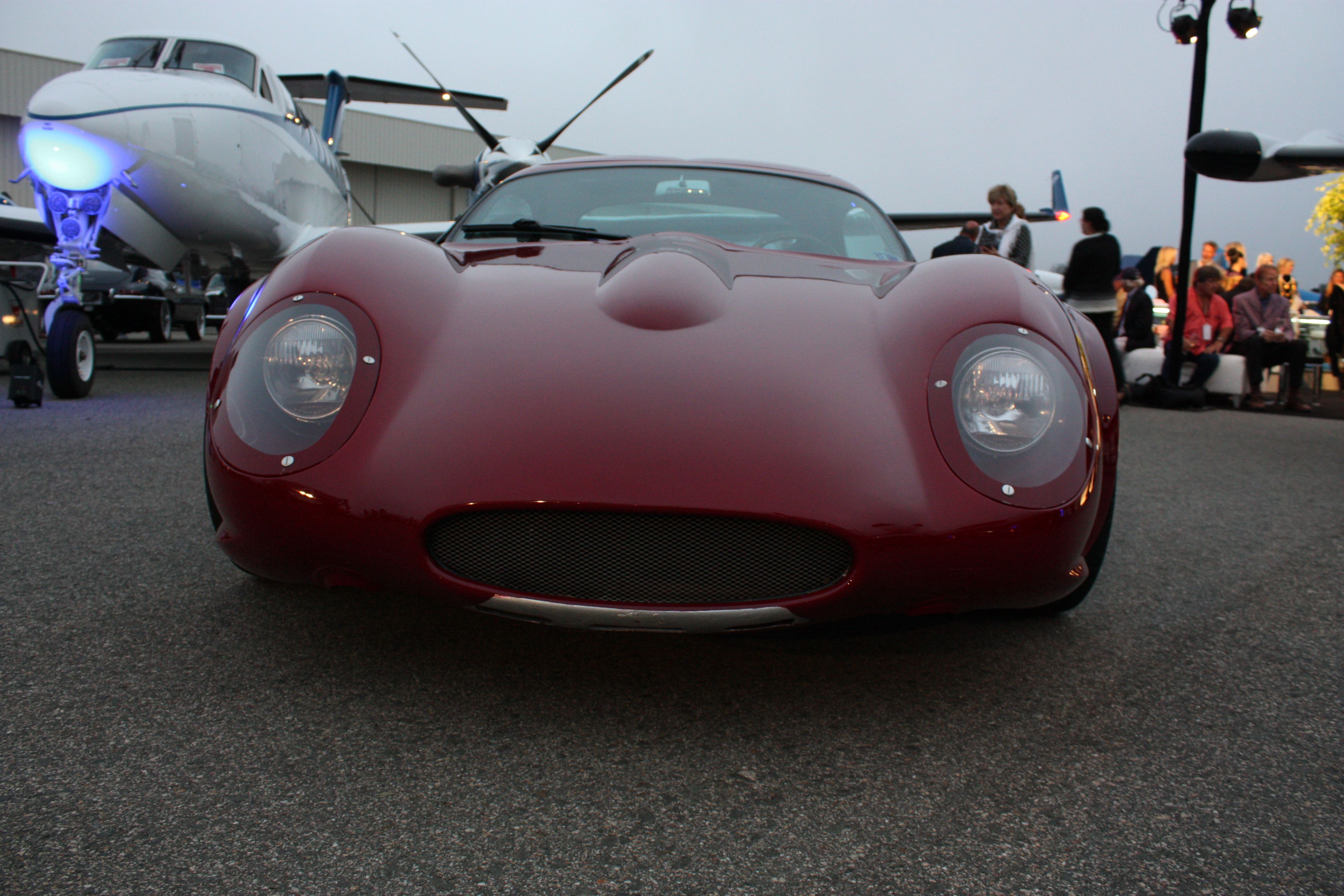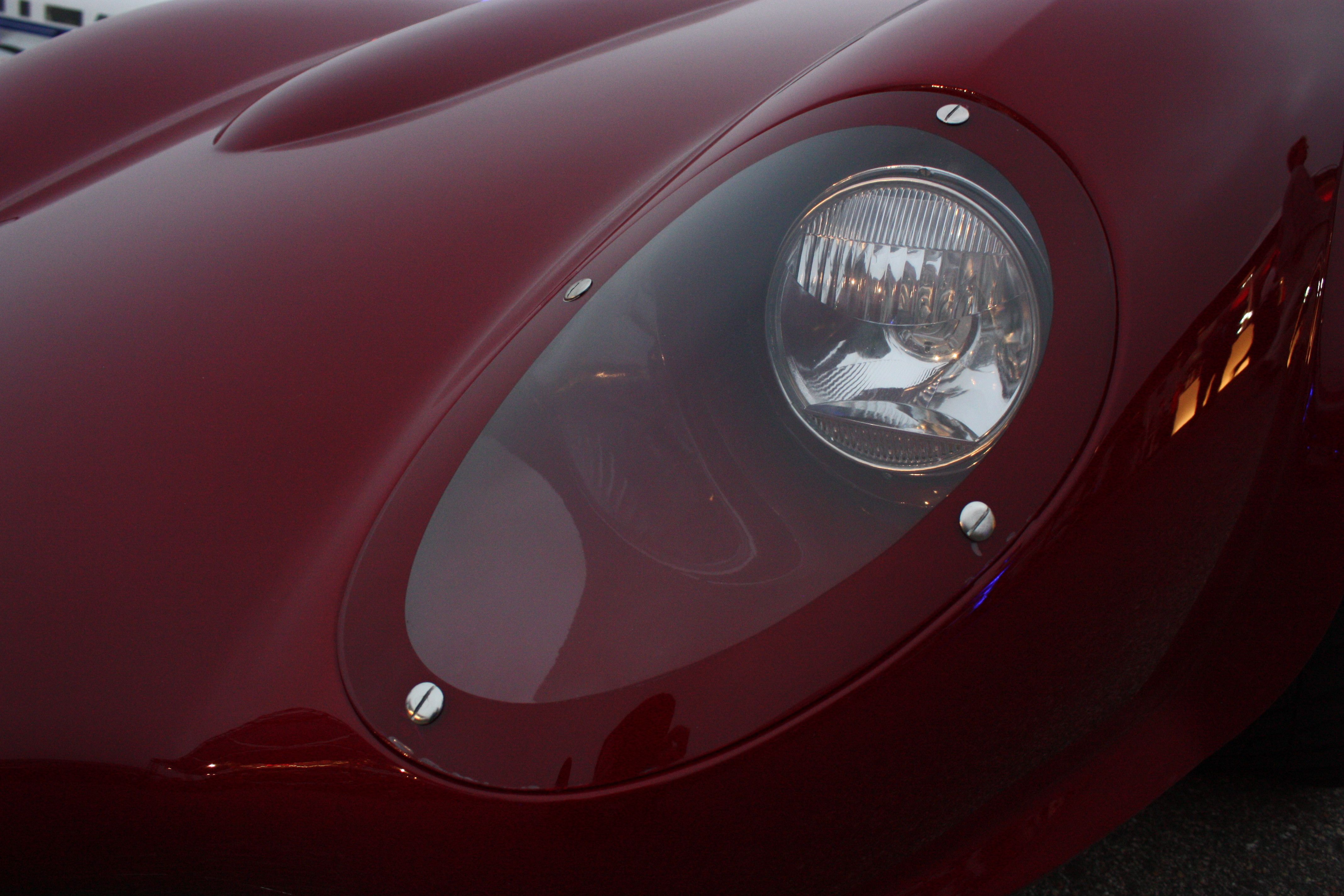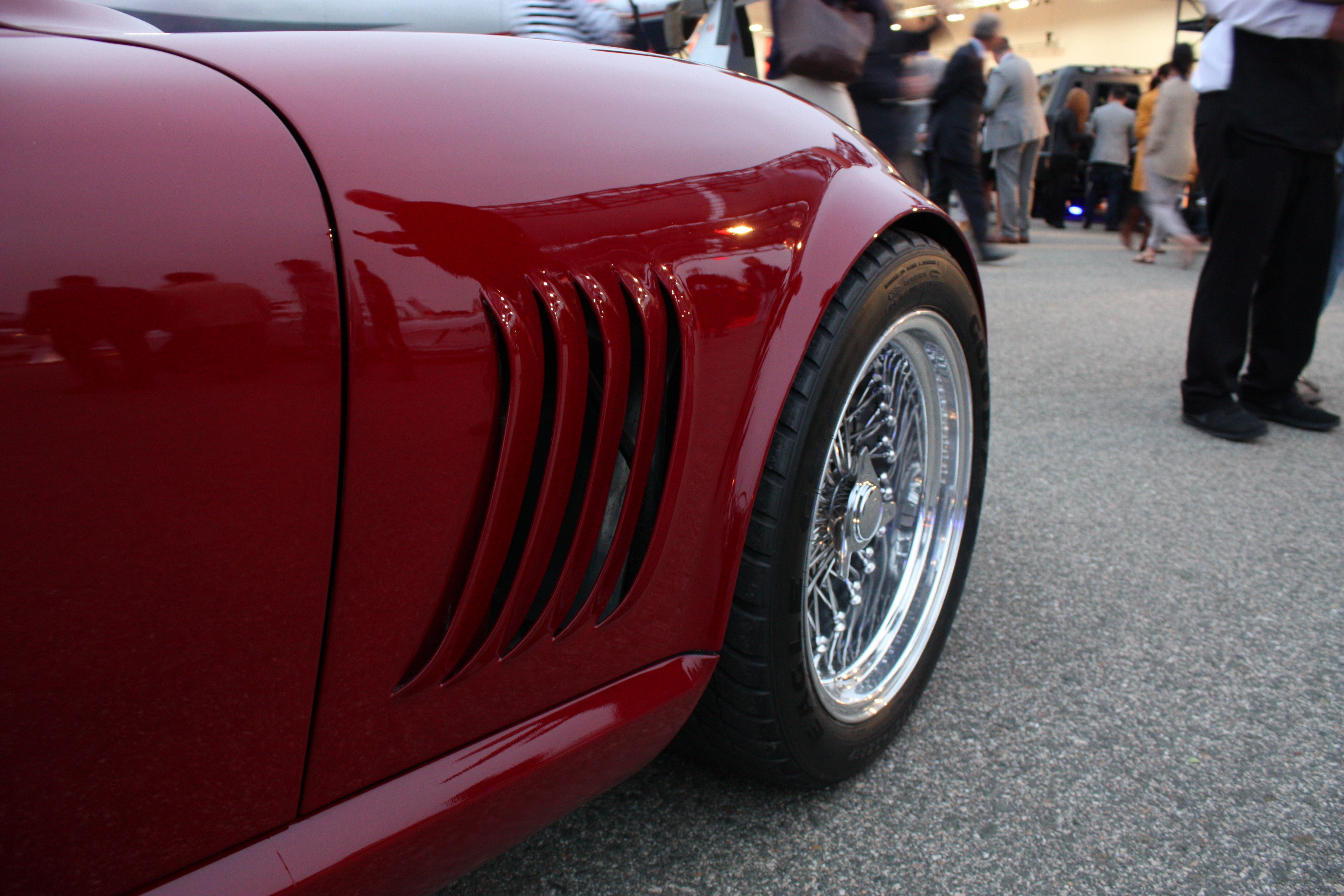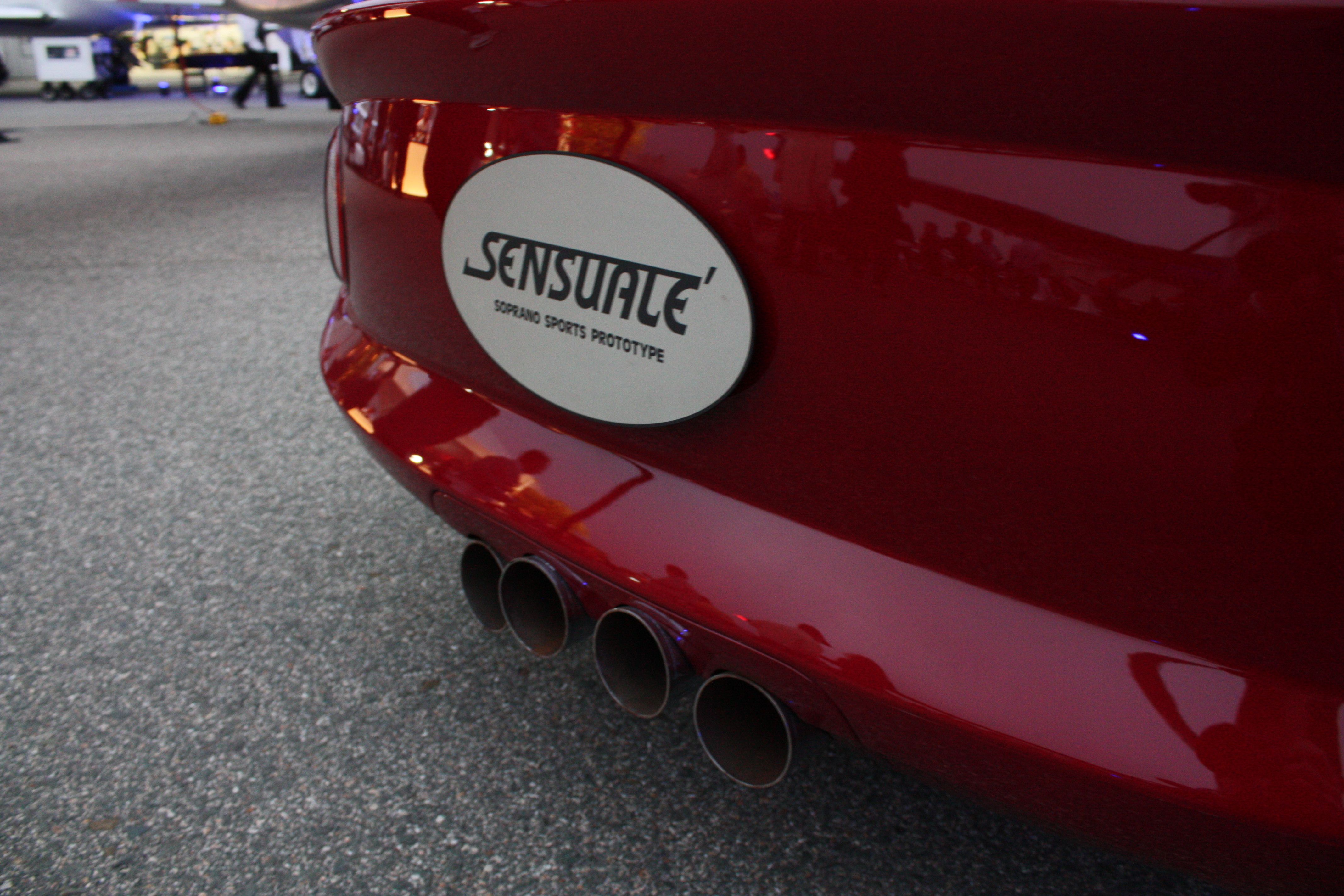The way Nicola Soprano sees things is that if you own a Ferrari 250 GTO or a Ferrari P4 you don’t really want to drive them on the street every day. So, Soprano sat down with a pen and a napkin and designed the car you see here – the Sensuale Prototype. To be quite honest, the car is pretty awesome and well thought out. It features a vintage Ferrari engine, a tubular steel chassis, and a hand-formed aluminum body, among other things. And, even more importantly, the car has its own unique style.
In an interview at the 2016 McCall Motorworks Revival, Mr. Soprano said, “The car is extraordinary in every respect. That’s what the name suggests. It’s sensual to drive and is equally as fun, not only to look at but to drive. That’s what it was designed to be.”
Despite the fact that the car looks complete, it is a prototype, and Soprano himself has said that the work is never really done. His inspiration came from classic Italian design of 1960s motorsports, which explains the gorgeous look and feel of this car. So, with that said, let’s take a good look at the Sensuale and talk about all the fine details that make this car a true one-of-a-kind.
Keep reading for a video interview with Nicola Soprano and our full review of his hand-built Sensuale
2016 Sensuale
- Make: Array
- Model: 2016 Sensuale
- [do not use] Vehicle Model: Array
Interview with the Man Behind the Car
Exterior
Looking at the front end, it’s painfully evident that Soprano looked to 60s Italian racers for his inspiration. In fact, the front end just screams “Ferrari 250 GTO.” Just take a look at that long hood, front grille, and those recessed headlights. While different, they are all features found on the classic GTO. The front grille is a bit larger and the nose a bit longer. As such, the headlights sit a little farther back than you see on the GTO. The character of the hood is even similar, but that scoop runs all the way back to the windshield on the Sensuale. Furthermore, those sharp body lines that define the top of the fenders are placed perfectly and definitely add to the character of the car.
Moving to the sides, we see some more similar features, but a lot of uniqueness too. For instance, the car does have gills on the front fenders, but they are completely different than that of the 250 GTO. Bubbly side skirts make up the bottom of the car, and lead the way back to vents just ahead of the rear wheels. The rear quarters are low and wide, giving it an elegant but muscular appearance. With the roof being so rounded along with those rear quarters, the cockpit has a bubble-like look to it, giving the car a very nice look. It rides on a set of custom wire wheels that are unique to this car only and look quite mean, if I say so myself.
Walking around to the rear of the car, it becomes evident that the roof panel on this baby is removable, you know, in case you want to let the wind blow through your hair on a cool Sunday afternoon. The bottom edge of the rear glass has an interesting wave to it that complements the contour of the rear end. Those muscular rear quarters rollover onto the rear and feature a low but sharp body line for added character. The built in spoiler is well thought out, integrates nicely with the rear end, and surely applies ample down pressure to the rear axle. A circular taillight defines each upper corner of the rear end, while a small, but elegant rear fascia features four exhaust outlets right in the middle. It’s hard to believe this thing started out as a napkin sketch and turned out looking this good, but seeing is believing my friends.
Interior
Opening the doors to this beauty yields an overwhelming sense of style and emotion. The upholstery is done up in camel colored leather and is a modern interpretation of upholstery from the 1960s. The wrinkle finish dashboard is made out of aluminum and features black wrinkle-finish paint, which is derived from GT racers from the 1950s and 1960s. The dash itself features a number of gauges, all arranged individually ahead of the steering wheel and above the center console. There is no radio or entertainment system to speak of, but with a vintage Ferrari V-12 under the hood, I don’t that that’s really much of an issue since the car practically creates its own soundtrack each time it is fired up or driven.
You’ll notice the most of the door panels, the center console, and the seats are all wrapped in the same leather. The Camel leather is also used as a boot for the shifter and the handbrake. A number of switches sit ahead of the shifter in the center console, but outside of that, there’s nothing to really speak of there. The pedals are made out of aluminum, and there is an interesting recess in the floor for the driver’s feet. It is surrounded by leather to protect the tan carpeting and features a black rubber insert that functions like a floor mat. I assume this recess is there for comfort as the seats sit low enough that the driver wouldn’t really be able to bend his legs much when sitting.
It is a beautiful and elegant design, but there is more here than what meets the eye. The engine under the hood actually sits behind the rear axle, which makes accessing the back side of the engine extremely difficult. But, Soprano had a solution for that and worked it into the interior quite well. When it comes time for maintenance, the front windshield folds upward, and the front of the dash is completely removable. Talk about innovation!
Drivetrain
To start off, the Sensuale is underpinned by a tubular steel chassis that features fully adjustable Heim jointed suspension with coil over shock absorbers. The 17-inch, bespoke, wire wheels help to give it a smooth ride and a fuel cell is used to store fuel. The engine under the hood is a 1960s 4.4-liter, Ferrari, V-12. Soprano hasn’t gone into specifics of exactly which car the engine came out of, but the SOHC 4.4 was used in the Ferrari 365 P2, so it is quite likely that the P2 was the donor. That engine had a bore and stroke of 3.19 inches by 2.8 inches and a compression ratio of 9.5-to-1. In the P2, it put out 380 horsepower at 7,200 RPM, so the Sensuale – weighing in at around 2,900 pounds – isn’t exactly a slouch when it comes to get up and go. The engine has two distributors and three weber carburetors that deliver fuel to four cylinders each. Power is routed to the rear wheels via a five-speed manual transmission.
Conclusion
Despite the fact that this car can be used as a daily driver, it is hand-built, so things like pricing and competition aren’t really relevant here. As far as pricing goes, you can feel free to put a price on the sweat and time that went into hand forming this piece of artwork, but I think I’ll personally leave that one to Soprano himself. You could, technically, list just about any 1960s Italian racer against this thing as a competitor, but I wouldn’t do this prototype the injustice. Something that is conceived by one man and is hand built is truly unique and really stands in a category all its own.
For being a hand-built, functioning prototype, you’ve really got to give Soprano credit. It may have taken a lot of time to complete, but I bet you every day he sits down inside and fires it up that he’s happy he took the time to build it. Not many people set out to build their own cars and actually pull it off, but every now and then it happens, and this is an exquisite example. I tip my hat to Mr. Soprano and his Sensuale prototype.

